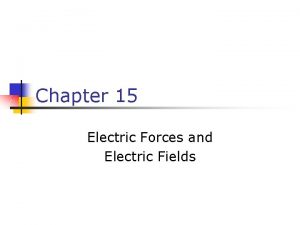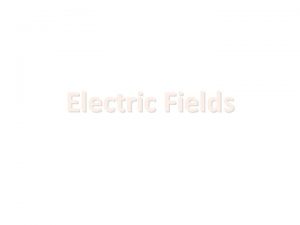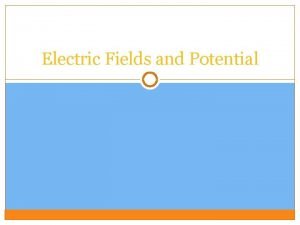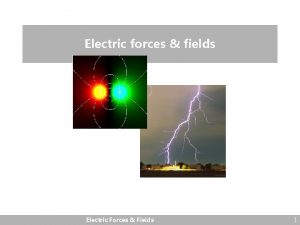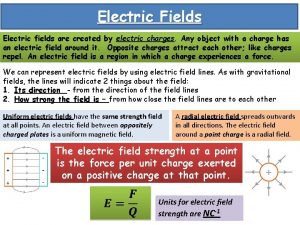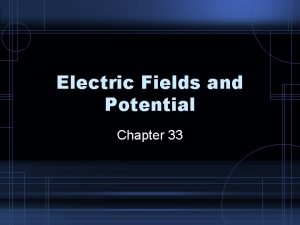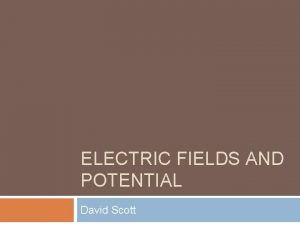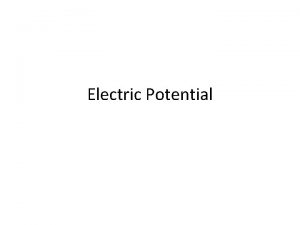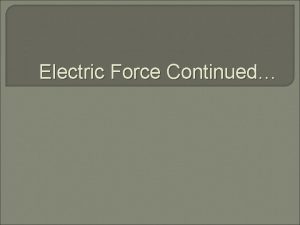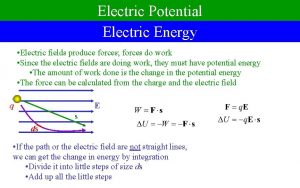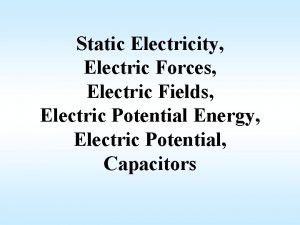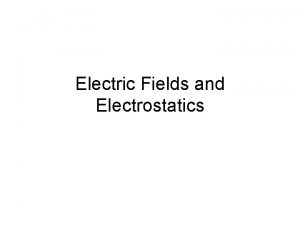Electric Potential III Fields Potential Conductors Potential and














- Slides: 14

Electric Potential (III) - Fields - Potential - Conductors

Potential and Continuous Charge Distributions We can use two completely different methods: 1. 2. Or, Find from Gauss’s Law, then…

Ex 1: Given V=3 x 2+12 x-1, find where E=0.

Ex 2: The Electric Potential of a Dipole y a -q a +q P Find: a) Potential V at point P. b) What if x>>a ? c) Find E. x

Solution

Ex 3: Find the potential of a finite line charge at P, AND the y-component of the electric field at P. P r d dq x L

Solution

Ex 3: Find the potential of a uniformly charged sphere of radius R, inside and out. R

Uniformly Charged Sphere, radius R E R r V

Recall that the electric field inside a solid conducting sphere with charge Q on its surface is zero. Outside the sphere the field is the same as the field of a point charge Q (at the center of the sphere). The point charge is the same as the total charge on the sphere. Find the potential inside and outside the sphere. +Q R

Solution -Inside (r<R), E=0, integral of zero = constant, so V=const -Outside (r>R), E is that of a point charge, integral gives V=k. Q/r

Solid Conducting Sphere, radius R E R r V

Quiz A charge +Q is placed on a spherical conducting shell. What is the potential (relative to infinity) at the centre? A) B) C) D) ke. Q/R 1 ke. Q/R 2 ke. Q/ (R 1 - R 2) zero +Q R 1 R 2

Calculating V from Sources: i) Point source: (note: V 0 as r ) or ii) Several point sources: (Scalar) iii) Continuous distribution: OR … I. Find from Gauss’s Law (if possible) II. Integrate, (a “line integral”)
 Electric field lines
Electric field lines Chapter 33 conceptual physics
Chapter 33 conceptual physics Red fields to green fields
Red fields to green fields Electric field formula voltage
Electric field formula voltage Electric potential is
Electric potential is What is electric potential
What is electric potential Define electric potential and potential difference.
Define electric potential and potential difference. Electrical potential
Electrical potential Electric potential inside non conducting sphere
Electric potential inside non conducting sphere Pe q
Pe q Electric forces and fields concept review
Electric forces and fields concept review Chapter 16: electric forces and fields answers
Chapter 16: electric forces and fields answers Electric currents and magnetic fields
Electric currents and magnetic fields Visualizing magnetic field
Visualizing magnetic field Electric fields quiz
Electric fields quiz














